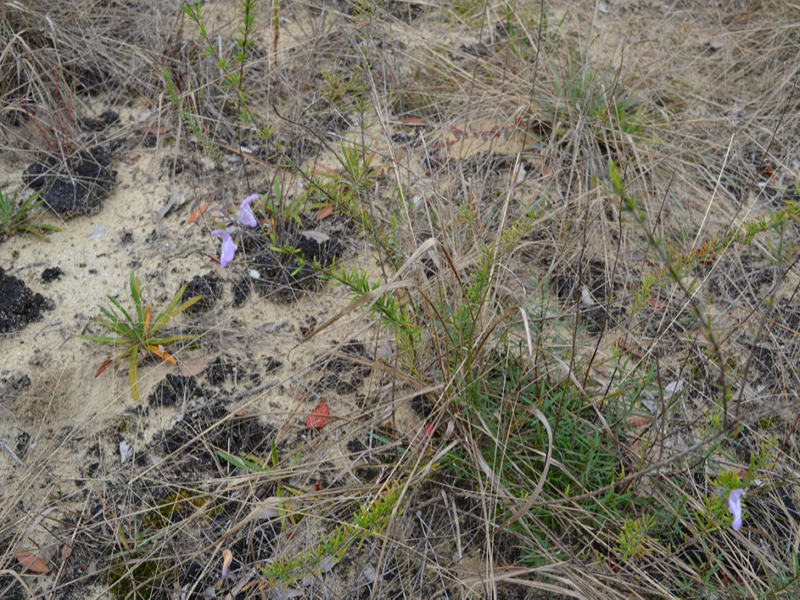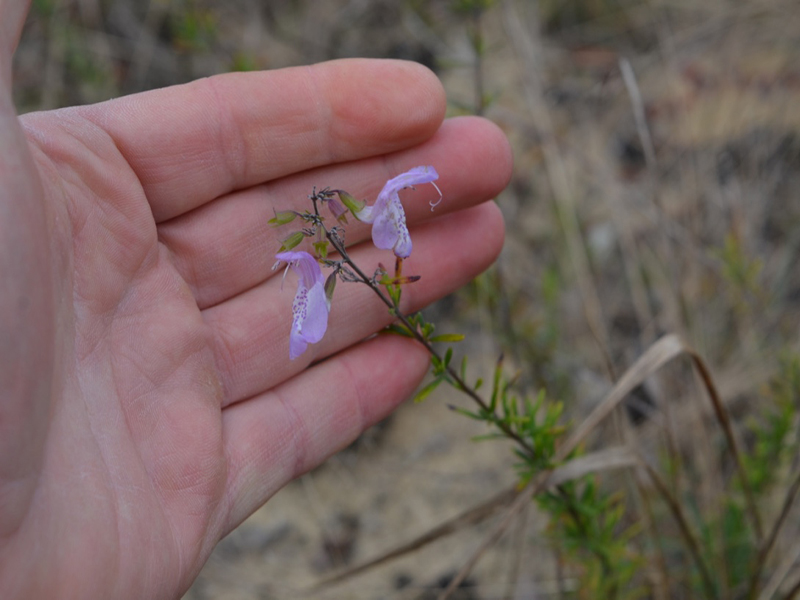| General Description | Long-lived perennial; attracts bees and other pollinators.
|
| Landscape | Ground cover, mass planting as a border plant or as a single plant in a wildflower garden. |
| Propagation | Seed. |
| Cultivation | Grow in full sun to partial sun and shade areas. Tolerates many types of soils; clay, sand, loam, alkaline, acidic and well-drained. It is also tolerant of drought. |
| Notable Specimens | Bok Tower Gardens,Lake Wales, Florida,Unites State of America. |
| Habitat | Grows on dunes and other landforms with deep, sandy soils, often near the coast. |
| Bark/Stem Description | Multi-trunked or clumping stems. |
| Leaf Description | Long-lived perennial. The branches end in twigs which are coated in pale hairs. The hairy, glandular, needle-like leaves are up to 1.5 cm in length. |
| Flower Description | Showy , lavender with dark lavender spots flowers, aroma, fragrance, year-round flowering with blue colour. The flower corolla is about 2 cm long, with a funnel-shaped throat and a hairy, lipped mouth. |
| Fruit Description | Round, length is less than 1 cm. |
| Texture Description | Medium |

